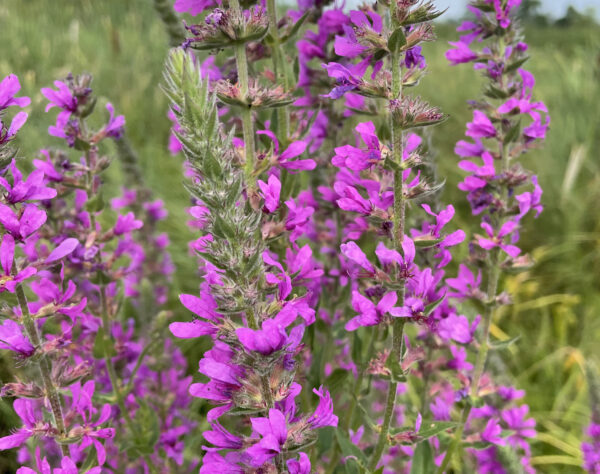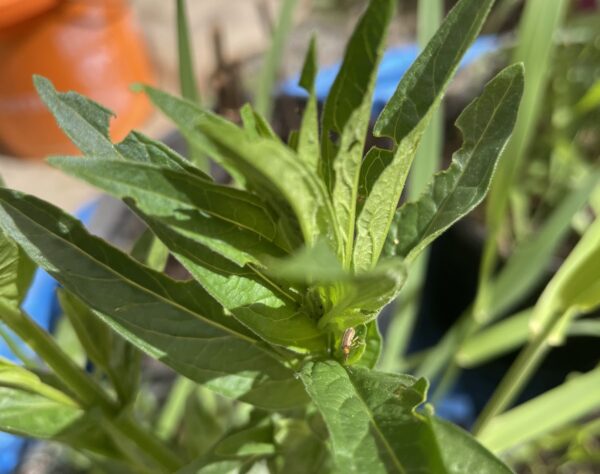The next time you take a fishing trip on the Namekagon river or paddle down the St. Croix, keep a close eye on the river banks. In the hot months of July and August, the invasive flowering plant known as purple loosestrife begins to bloom. What may initially appear as a beautiful purple flower is actually a nightmare to the native aquatic ecosystem.
Purple loosestrife can most easily be identified by its bright purple flowers with five to six petals that grow on tall spikes. Another identifier of the purple loosestrife plant are its four to six sided stems. The invasive blooms prefer to grow in wet soil and are commonly found along lakes, rivers, wetlands, and even growing in roadside ditches.
But why is purple loosestrife so bad? An invasive species, as defined by the National Invasive Species Information Center, “is a species that is: 1) non-native (or alien) to the ecosystem under consideration and, 2) whose introduction causes or is likely to cause economic or environmental harm or harm to human health.” Purple loosestrife is known to cause harm to native wetland plant communities by outcompeting native plants. A single purple loosestrife plant can produce up to one million seeds, making this flower a difficult one to get rid of once it has established itself. This can then lead to negative impacts on native wildlife by reducing their food availability, shelter and decreasing species diversity.

Two of the most common methods for controlling purple loosestrife populations include deadheading the flowers, the seed producing part of the plant, via mechanical removal or by applying aquatic-grade herbicides. However, a third more innovative option to control purple loosestrife is with the use of an insect friend. Galerucella beetles are a genus of beetle native to Eurasia that are known for their hearty appetite for purple loosestrife. The Galerucella beetle does not cause any threat to native plants and has been used by both the Wisconsin DNR and the Minnesota DNR since the 1990’s as a biocontrol to decrease the density and seed output of purple loosestrife.
Wild Rivers Conservancy has worked with partners in Burnett and Polk counties and volunteers to raise these biocontrol beetles to release in areas with high populations of purple loosestrife. As the Galerucella beetles emerge in the spring, they are captured and brought to a mass rearing cage.. These mass rearing cages are filled with purple loosestrife plants, which provide food and shelter for the adult beetles as they lay their eggs. These biocontrol beetles will then be released onto large populations of purple loosestrife throughout the St. Croix watershed region. Once released, the beetles will do what they do best–feed on purple loosestrife!

The long term goal of this biocontrol project is for the beetle to make enough of an impact on the health of the purple loosestrife plants, that the playing field is leveled, giving native plants a chance to out compete the invasive species.
After spending a day on the water, be sure to Clean, Drain, and Dry your boat fully to avoid spreading purple loosestrife seeds, including both motorized and non-motorized watercraft. If you’re out on the hiking trails, make sure to practice Play, Clean, Go principals and clean the treads of your shoes and gear so you don’t transport invasive seeds. We all have a crucial part in protecting the lakes, rivers, and wetlands we know, love and cherish.
Interested in learning more about the Purple Loosestrife Biocontrol Project?
Photo Credit: Katie Sickmann and Maria Young
